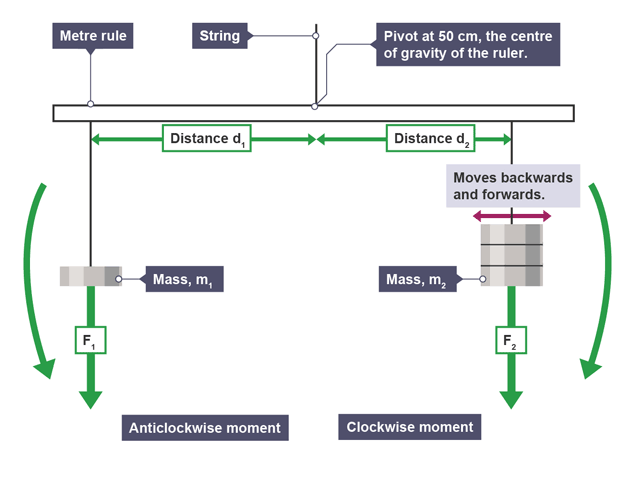Forces, movement, shape & momentum
1/44
There's no tags or description
Looks like no tags are added yet.
Name | Mastery | Learn | Test | Matching | Spaced |
|---|
No study sessions yet.
45 Terms
What is a vector quantity? Give examples
A vector quantity has both magnitude & direction
e.g. velocity, displacement, force & acceleration
What is a scalar quantity? Give examples
A scalar quantity has just magnitude
e.g. mass, volume, time, distance, speed
What effects can forces have on a body?
Forces can change the speed, shape or direction of a body
What are the units for force?
Newtons (N)
What is gravitational force?
A force that attracts objects together
The force increases if the masses of the objects increase & it decreases if the objects are moved further away from each other
What is normal reaction / contact force?
The repulsive force that stops 2 touching objects from moving into each other
What is a non contact force?
Forces that can influence the object without being in contact with it
e.g. gravitational force, magnetic force, electrostatic
What is friction?
The force that opposes motion
What is air resistance?
The force that opposes the movement of objects through a fluid
Objects can be streamlined to reduce this force
What is upthrust?
The force experienced by objects placed into a fluid
It is equal to the weight of displaced fluid
Object floats if the upthrust force equals its weight
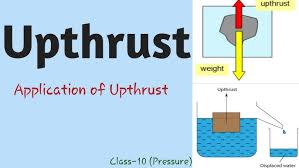
What is magnetic force?
The attractive & repulsive force between magnets & magnetic materials
What is electrostatic force?
The attractive & repulsive forces caused by objects being charged
What is resultant force?
The overall force that acts on a object
When the resultant force is in the same direction the object is moving, what is the effect on the motion of that object?
The object accelerates
When the resultant force is in the opposite direction the object is moving, what is the effect on the motion of that object?
The object decelerates
When the resultant force is at zero, what is the effect on the motion of an object?
The object’s velocity stays the same (including if the object is stationary)
What is a balanced force?
Forces that are equal in size but opposite in direction
They are called “balanced” because the resultant force is zero
(e.g. in a tug of war where each team is pulling equally on the rope. This is a balanced force because the forces exerted on the rope are equal in size and opposite in direction. Therefore the rope will have an acceleration of zero and will remain stationary)
What is an unbalanced force?
Forces that are NOT equal in size
They are called “unbalanced” because the resultant force is not equal to zero
This can cause an object to change speed, direction or shape
What does Hookes’ law state?
That the extension of a spring is directly proportional to the force used to stretch the spring
Explain an experiment which can be used to investigate whether a spring obeys Hooke’s law
1) Set up the apparatus (shown in diagram)
2) Record the original position of the pin against the metre ruler
3) Add 1N (100g) to the weight holder & record the new position of the pin
4) Calculate the extension of the spring (new pin position - original pin position)
5) Repeat this method for 2N, 3N, 4N, 5N & 6N
6) Plot a graph with the results & if the line of best fit is straight & passes through the origin, the spring obeys Hooke’s Law
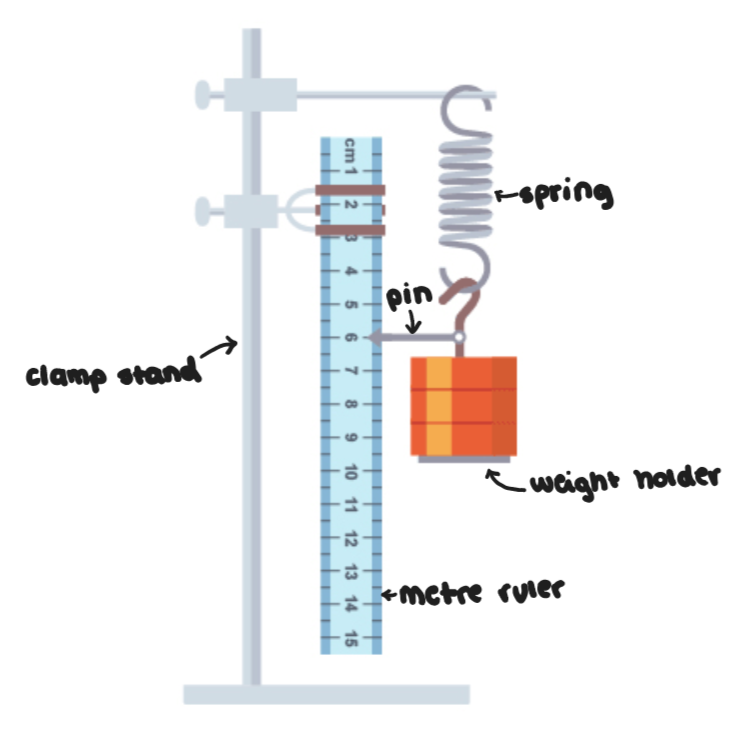
What is elastic behavior?
The ability for a material to return to its original shape after the forces causing deformation have been removed
What is the elastic limit?
The maximum extension of a material so that after the forces have been removed, it will still have elastic behavior
If the elastic limit is exceeded the material will be permanently stretched & won’t obey Hooke’s Law
What is Newtons 1st law of motion?
If the resultant force acting on an object is zero, the velocity will remain constant
What is Newtons 2nd law of motion?
Force = mass × acceleration
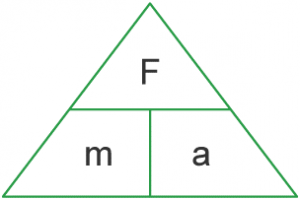
What is Newtons 3rd law of motion?
If an object exerts a force on another object, that other object will exert an equal & opposite force on the original object
What is the formula linking weight, mass & gravitational field strength?
Weight = mass × gravitational field strength
W = m × g
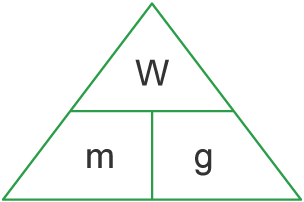
What is free fall?
When the only force acting on a falling object is weight
What is terminal velocity?
The maximum speed achieved by a falling object
When do falling objects reach a terminal velocity?
When the forces acting on the object are balanced so it is no longer accelerating
Explain the forces acting on a falling object
- Initially, the only force acting on a falling object is weight
- However, as the object falls, it accelerates which increases air resistance because the faster an object is travelling the greater the air resistance is acting against it
- This reduces the resultant force downwards & therefore the acceleration
- Eventually, the forces acting on the falling object will be equal so there is no resultant force & the terminal velocity will be reached
When a bouncy ball is dropped, explain why it does not bounce back to its original height
Initially the ball only has GPE, but as it falls it gains KE
When the ball hits the ground, energy is transferred to the thermal store due to friction
Energy is also transferred into sound & elastic potential energy store
This means that the ball cannot bounce back to its original height because some of the energy is lost
What is the stopping distance of a vehicle?
thinking distance + breaking distance
What factors effect the thinking distance?
Increase thinking distance → alcohol, drugs, tiredness, distractions, faster vehicle speed
Decrease thinking distance → caffeine, slower vehicle speed
What factors effect the breaking distance?
Increase breaking distance → wet or icy road conditions, worn tires, worn brake pads, heavier vehicle mass, faster vehicle speed
Decrease breaking distance → good road conditions, fresh tires, fresh brake pads, lighter vehicle mass, slower vehicle speed
What happens to kinetic energy when a vehicle is breaking?
KE is transferred to thermal energy because friction is applied to the moving parts of the vehicle in order to stop it which generates heat
What is the formula linking kinetic energy, mass & velocity?
Kinetic energy = ½ mass × velocity2
KE = ½ m × v2
What is the formula linking momentum, mass & velocity?
Momentum = mass × velocity
p = m × v
What are the units for momentum?
Kilograms metres per second (kg m/s)
What does the principle of conservation of momentum state?
That in a collision, the total momentum before is equal to the total momentum afterwards
Therefore m1v1 = m2v2
What is the formula linking force, change in momentum & time taken?
Force = change in momentum ÷ time taken
F = (mv - mu) ÷ t
Explain some car safety features using the idea of momentum
Crumple zones, air bags & collapsible steering wheels are designed to increase the time taken for a driver / passenger to change momentum to zero during a crash
F = (mv - mu) ÷ t shows that if the time taken is increased for the same momentum change, the force exerted is decreased & therefore so is the injury risk on the driver / passenger
What does the principle of moments state?
That when a body is balanced, the total clockwise moment about a point is equal to the total anticlockwise moment about the same point
What is the equation for moments?
Moment = force × perpendicular distance from the pivot
M= F × d
What are the units for moments?
Newton-metres (Nm)
Describe an experiment that investigates the principle of moments
1. Suspend a metre-ruler at 50cm so that it is balanced horizontally (ruler = equilibrium, 50cm mark = pivot)
2. Suspend a mass (m1) from one side of the ruler a distance (d1) from the pivot & record d1 in cm & m1 in kg
3. Suspend another mass (m2) from the other side of the pivot & carefully move this mass backwards & forwards until the ruler is balanced horizontally. Record d2 in cm & m2 in kg
4. Repeat with different masses & distances
5. Calculate the turning forces, F1 & F2, using W = mg
6. Calculate the clockwise & anticlockwise moments by M = Fd
